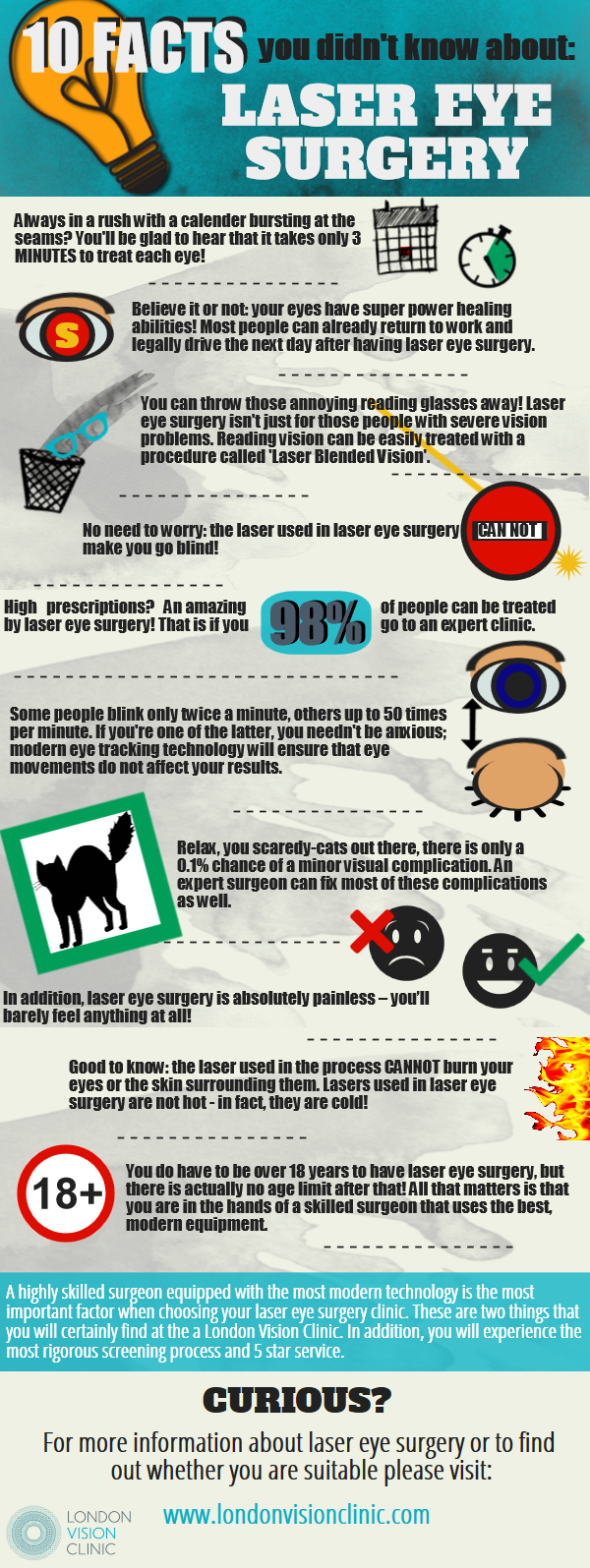This Short Article Assistance You To Recognize The Refractive Lens Exchange After Lasik

Article created by-Pollard Hess
Refractive Lens Exchange (RLE) is a safe as well as effective vision corrective procedure that is typically made use of for people who can not get LASIK or other laser vision modification treatments.
During RLE, the all-natural lens of the eye that has ended up being rigid and also can no more focus is removed and also replaced with a manmade synthetic implant. This permits the client to see clearly at both near and far distances without glasses or call lenses.
LASIK vs. RLE
LASIK, PRK and also various other laser vision modification treatments boost refractive errors like nearsightedness (nearsightedness), farsightedness (hyperopia) or astigmatism by reshaping the cornea. These therapies also eliminate or reduce an individual's demand for glasses or contact lenses.
Refractive lens exchange, or RLE, is a different method to optional refractive surgical treatment than laser vision correction. It replaces the eye's natural lens with an artificial intraocular lens, or IOL.
This procedure can get rid of the demand for glasses or contacts and prevent future cataract advancement. It is a fantastic choice for clients that do not qualify for LASIK or that are older as well as have presbyopia, or age-related fuzzy near vision.
Throughout RLE, your eye's natural lens is eliminated as well as replaced with a synthetic IOL that offers clear vision at a solitary concentrating range. The selection of IOL relies on your therapy expectations and a Mittleman Eye specialist will certainly aid you select the right kind for your unique aesthetic needs.
RLE vs. PRK
RLE (Refractive Lens Exchange) is a newer kind of vision adjustment surgery that can be extra effective for some individuals than LASIK or PRK. It can likewise aid enhance a patient's quality of life by reducing the need to put on glasses.
RLE can be a fantastic option for clients who have a high level of nearsightedness, hyperopia or astigmatism that would certainly make them ineligible for LASIK or PRK. It is also an excellent selection for patients who have age-related vision problems, like presbyopia or cataracts.
https://miles413raina.werite.net/post/2023/04/13/How-Much-Does-Lasik-Surgical-Procedure-Price2 is commonly done for patients over 40 and that have a moderate to high degree of refractive error. It is likewise beneficial to people who have a thin cornea since they do not need to stress over the flap of their cornea being damaged by LASIK.
RLE vs. Monovision
Refractive lens exchange, or RLE, is a risk-free as well as efficient vision modification treatment that removes your eye's all-natural lens, and changes it with an artificial intraocular lens (IOL). It is typically used to treat presbyopia, or the age-related blurring of up-close vision.
Individuals who have actually not been candidates for LASIK as a result of their corneal thickness might be excellent for RLE. This procedure also makes people immune to establishing cataracts, a common eye condition that causes clouding of the natural lens.
As an alternative to monovision LASIK, refractive lens exchange is an excellent remedy for older adults who require reading glasses. This procedure is additionally helpful for individuals with extremely thin corneas who are not candidates for laser eye surgical treatment.
RLE vs. Monofocal IOLs
Refractive Lens Exchange (RLE) is a great option for people who do not get approved for LASIK or for those that intend to improve their vision at multiple distances. During RLE, your natural lens is changed with an intraocular lens (IOL) of your option based on your demands and also choices.
For https://www.webmd.com/eye-health/vitreomacular-adhesion-treatments who desire clear vision at one range just, a monofocal IOL is suggested. Making use of the method referred to as micromonovision, a monofocal IOL can be placed that fixes distance and near vision at the same time.
Additionally, patients can select a multifocal IOL to supply clear vision at multiple ranges at a solitary emphasis point. Multifocal IOLs are also referred to as expanded depth of focus or accommodating IOLs.
During the RLE procedure, your natural lens is gotten rid of through a tiny laceration less than 3mm and replaced with an IOL that is inserted with the same opening. https://zenwriting.net/fredric56reynaldo/just-how-much-does-lasik-surgical-treatment-price will heal quickly and also you must be able to resume normal activities within a week of surgery.

